Hi everyone. I’ve been wondering what became of the building located at 19 Cleveland Street.
As most of you know, in 1889 it was the site of a homosexual brothel that sparked a massive public scandal known to history as ‘The Cleveland Street Scandal’. To briefly summarize: in 1889, sexual relations between males was illegal. Police discovered that telegraph boys employed by the Post office were being paid to have sex with upper-class gentlemen, and their investigation turned into a political nightmare of epic proportions when men such as Lord Arthur Somerset (Equerry to the Prince of Wales), the Earl of Euston, and even Queen Victoria’s eldest grandson Prince Albert Victor were implicated as clients of the brothel. The government attempted to squelch the leaks and rumors, and even today it is not known for certain if Prince Eddy was really a client. Chief Inspector Frederick Abberline was involved in the investigation.
(For those of you who want to learn more about the Cleveland Street Scandal, here are some links: http://en.wikipedia.org/wiki/Cleveland_Street_scandal
http://www.casebook.org/about_the_ca...reet%20Scandal )
In the aftermath of the scandal, the address of 19 Cleveland Street became so notorious that the building was reportedly:
a.) renumbered in an effort to disguise its identity
b.) torn down
c.) both.
But when I looked into the question I came up with a number of conflicting reports, and I’m not sure which of these stories, if any, is accurate.
1. This news article from 2000 claims that the building at 19 Cleveland Street still "secretly" existed at that time, but had been renumbered and divided up into flats.
http://www.telegraph.co.uk/property/...nd-Street.html
Quotes from the above article written by Mathew Gwyther: “If you wander up and down Cleveland Street in the fashionable Fitzrovia area of London, you will look in vain for Number 19. Officially, it no longer exists. This is because the house was once the venue for one of the most notorious sleaze stories in late-Victorian England and was quietly removed from the Land Register.”… “The renumbered house is now divided into three flats, and Flat Two - where the bedrooms used to be - is owned by a German chef, Michael von Hruschka.” … “So his two-bedroom flat is now for sale. It is fairly small, the kitchen is contained in an alcove off the living room and the carpets need a clean, but the asking price for this blue plaque-free piece of history is a cool £280,000 - about double its value two years ago.”
2. I looked the address up on Google Maps, and the street view showed buildings on only one side of the street, the even-numbered side, and a massive construction site on the other side where one would presume #19 would be located if it still existed. (See attachments. The current #20 is painted white and #18 is painted black. The entire block on the uneven-numbered side has been demolished.) Even if #19 was officially renumbered and did not stand opposite the current #20 and #18, it seems unlikely that the local numbering system could have been disrupted to so large an extent that the original #19 was located far enough down the street to escape the neighborhood demolition. Does anyone know the extent of the renumbering effort?
> Note to attached photos: Charles Dickens lived in the white Georgian house at what is now #22 Cleveland St. when he was a boy. That’s the house with the attached shop-front to the left of #20 in second photo. The address then was #10 Norfolk Street. I don’t know when Norfolk St. became part of Cleveland St., or if this change had any connection to the Cleveland Street Scandal.
3. The Wikipedia article on the Cleveland Street Scandal (see above link) says this: “19 Cleveland Street is presumed to have been demolished when the Middlesex Hospital was expanded in the 1920s. The hospital once occupied an entire block on the western side of the southern section of the street. The former Middlesex Hospital Annexe and Outpatient Department survives on the eastern side of the street. However one report has alleged that Cleveland Street was renumbered, with number 19 being removed from the Land Registry, but that the house survives, divided into three flats, under another number. The street was certainly renumbered (and was originally called Norfolk Street), but this suggestion seems unlikely.”
The Middlesex Hospital was torn down in 2008. I have heard that #19 was torn down in either the 1890’s or in the 1920’s to make way for the hospital, but does that mean the street was not renumbered to hide the address? In 1889 did it stand opposite the current #18 and #20?
4. Then I found this mention, which brought me back to my original Google Maps search: “A Victorian brothel at 19 Cleveland Street (since renumbered #18 and rebuilt)…” From 'The London Compendium: Exploring the Hidden Metropolis' by Ed Glinert, 2003.
I’m not particularly familiar with the London address system, but I’ve never heard of a city causing its odd-and-even-numbered street addresses to swap sides.
> So what’s the truth? Was the original #19 Cleveland Street renumbered to the opposite side of the street as #18? Is that the same #18 that exists today as shown on Google Maps?
Does “renumbered #18 and rebuilt” mean that it was completely demolished and rebuilt, or that it was merely renovated?
Was it demolished at some point between the 1890’s and the 1920’s, or more recently? Was the original #19 given some other street number, and does it still stand?
Thanks in advance for your help.
Best regards, Archaic
As most of you know, in 1889 it was the site of a homosexual brothel that sparked a massive public scandal known to history as ‘The Cleveland Street Scandal’. To briefly summarize: in 1889, sexual relations between males was illegal. Police discovered that telegraph boys employed by the Post office were being paid to have sex with upper-class gentlemen, and their investigation turned into a political nightmare of epic proportions when men such as Lord Arthur Somerset (Equerry to the Prince of Wales), the Earl of Euston, and even Queen Victoria’s eldest grandson Prince Albert Victor were implicated as clients of the brothel. The government attempted to squelch the leaks and rumors, and even today it is not known for certain if Prince Eddy was really a client. Chief Inspector Frederick Abberline was involved in the investigation.
(For those of you who want to learn more about the Cleveland Street Scandal, here are some links: http://en.wikipedia.org/wiki/Cleveland_Street_scandal
http://www.casebook.org/about_the_ca...reet%20Scandal )
In the aftermath of the scandal, the address of 19 Cleveland Street became so notorious that the building was reportedly:
a.) renumbered in an effort to disguise its identity
b.) torn down
c.) both.
But when I looked into the question I came up with a number of conflicting reports, and I’m not sure which of these stories, if any, is accurate.
1. This news article from 2000 claims that the building at 19 Cleveland Street still "secretly" existed at that time, but had been renumbered and divided up into flats.
http://www.telegraph.co.uk/property/...nd-Street.html
Quotes from the above article written by Mathew Gwyther: “If you wander up and down Cleveland Street in the fashionable Fitzrovia area of London, you will look in vain for Number 19. Officially, it no longer exists. This is because the house was once the venue for one of the most notorious sleaze stories in late-Victorian England and was quietly removed from the Land Register.”… “The renumbered house is now divided into three flats, and Flat Two - where the bedrooms used to be - is owned by a German chef, Michael von Hruschka.” … “So his two-bedroom flat is now for sale. It is fairly small, the kitchen is contained in an alcove off the living room and the carpets need a clean, but the asking price for this blue plaque-free piece of history is a cool £280,000 - about double its value two years ago.”
2. I looked the address up on Google Maps, and the street view showed buildings on only one side of the street, the even-numbered side, and a massive construction site on the other side where one would presume #19 would be located if it still existed. (See attachments. The current #20 is painted white and #18 is painted black. The entire block on the uneven-numbered side has been demolished.) Even if #19 was officially renumbered and did not stand opposite the current #20 and #18, it seems unlikely that the local numbering system could have been disrupted to so large an extent that the original #19 was located far enough down the street to escape the neighborhood demolition. Does anyone know the extent of the renumbering effort?
> Note to attached photos: Charles Dickens lived in the white Georgian house at what is now #22 Cleveland St. when he was a boy. That’s the house with the attached shop-front to the left of #20 in second photo. The address then was #10 Norfolk Street. I don’t know when Norfolk St. became part of Cleveland St., or if this change had any connection to the Cleveland Street Scandal.
3. The Wikipedia article on the Cleveland Street Scandal (see above link) says this: “19 Cleveland Street is presumed to have been demolished when the Middlesex Hospital was expanded in the 1920s. The hospital once occupied an entire block on the western side of the southern section of the street. The former Middlesex Hospital Annexe and Outpatient Department survives on the eastern side of the street. However one report has alleged that Cleveland Street was renumbered, with number 19 being removed from the Land Registry, but that the house survives, divided into three flats, under another number. The street was certainly renumbered (and was originally called Norfolk Street), but this suggestion seems unlikely.”
The Middlesex Hospital was torn down in 2008. I have heard that #19 was torn down in either the 1890’s or in the 1920’s to make way for the hospital, but does that mean the street was not renumbered to hide the address? In 1889 did it stand opposite the current #18 and #20?
4. Then I found this mention, which brought me back to my original Google Maps search: “A Victorian brothel at 19 Cleveland Street (since renumbered #18 and rebuilt)…” From 'The London Compendium: Exploring the Hidden Metropolis' by Ed Glinert, 2003.
I’m not particularly familiar with the London address system, but I’ve never heard of a city causing its odd-and-even-numbered street addresses to swap sides.
> So what’s the truth? Was the original #19 Cleveland Street renumbered to the opposite side of the street as #18? Is that the same #18 that exists today as shown on Google Maps?
Does “renumbered #18 and rebuilt” mean that it was completely demolished and rebuilt, or that it was merely renovated?
Was it demolished at some point between the 1890’s and the 1920’s, or more recently? Was the original #19 given some other street number, and does it still stand?
Thanks in advance for your help.
Best regards, Archaic






 Sink the Bismark
Sink the Bismark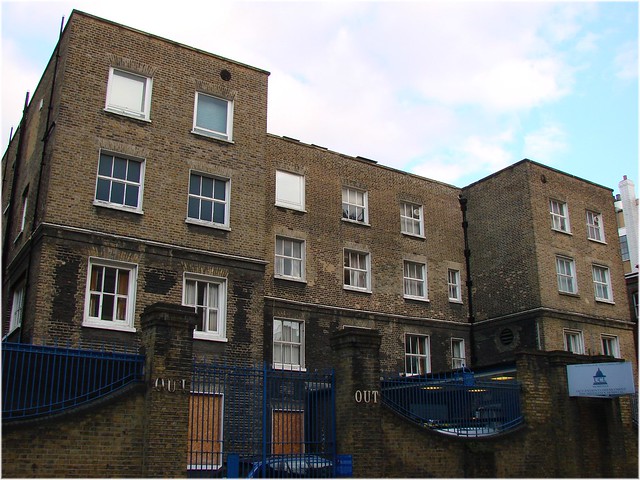
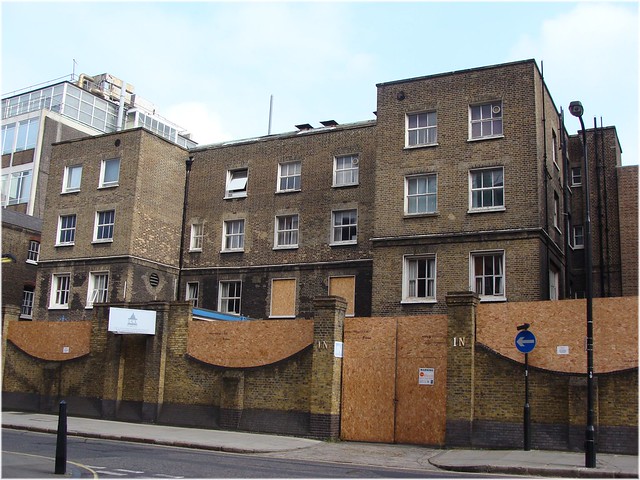

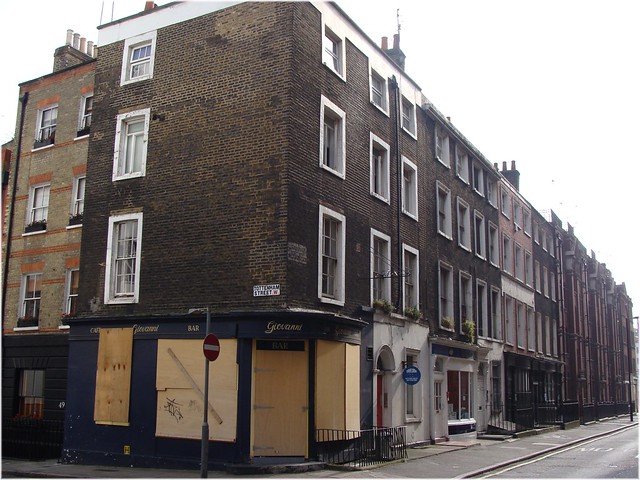
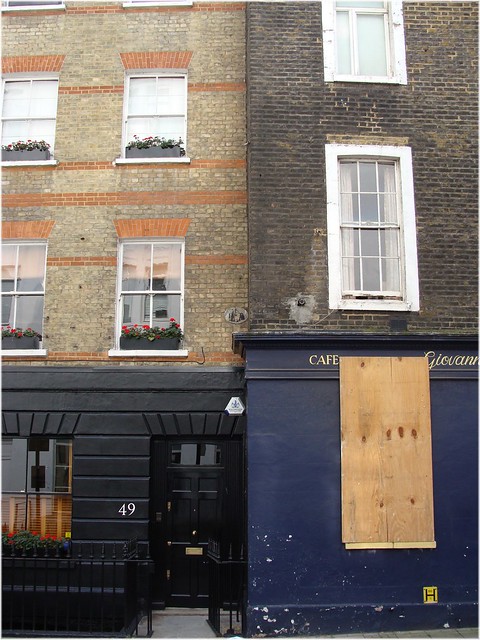
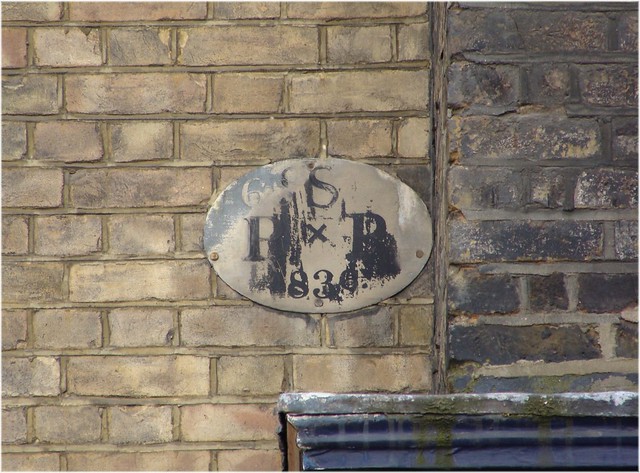
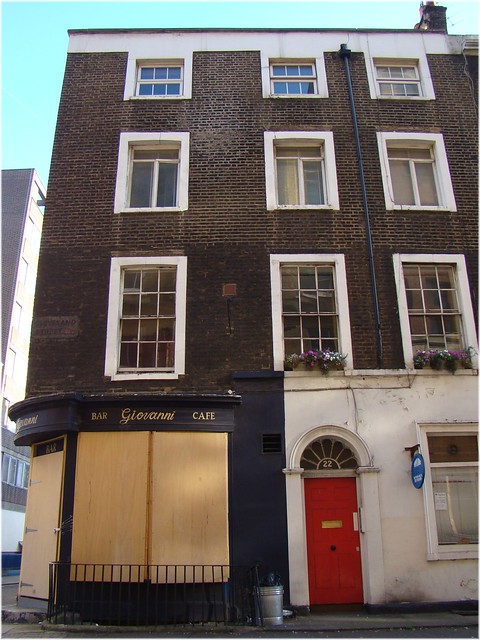
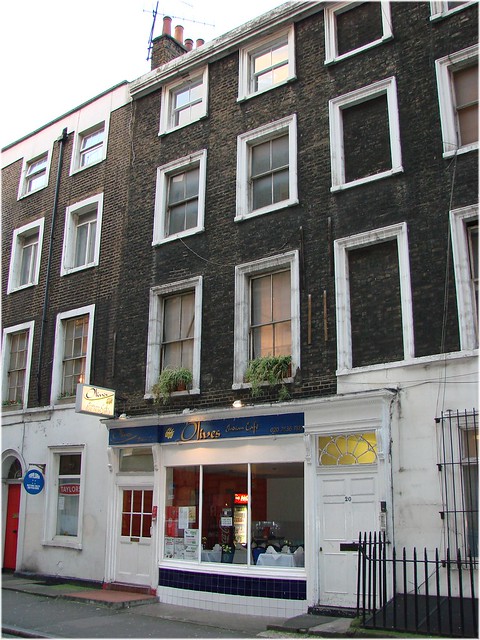
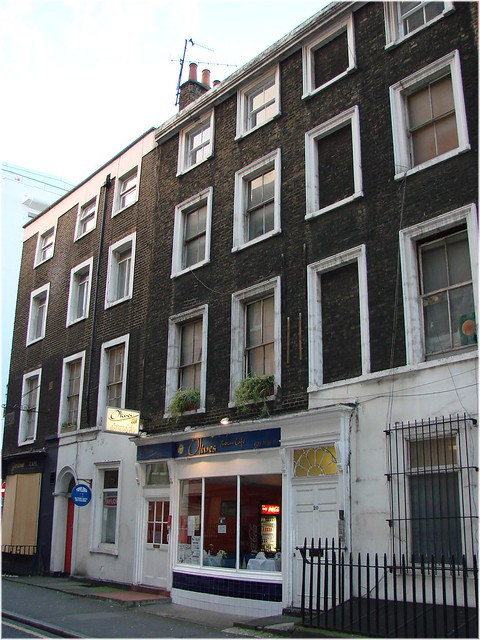


 Cleveland Street must have suddenly become a very unfashionable address.
Cleveland Street must have suddenly become a very unfashionable address.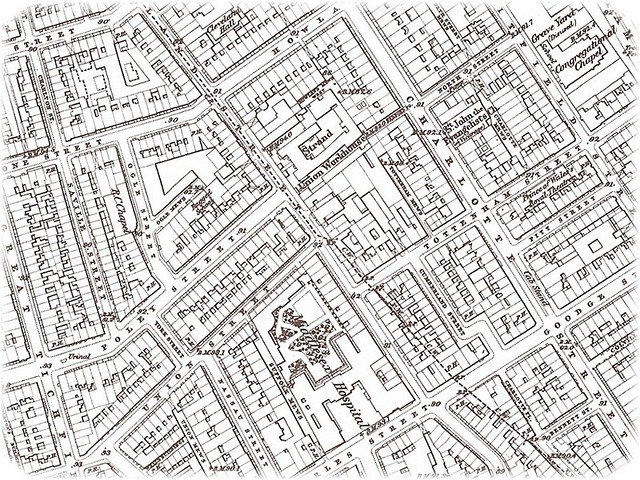
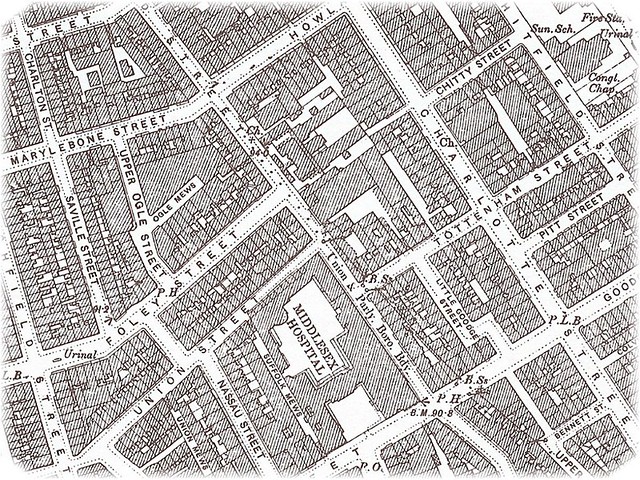
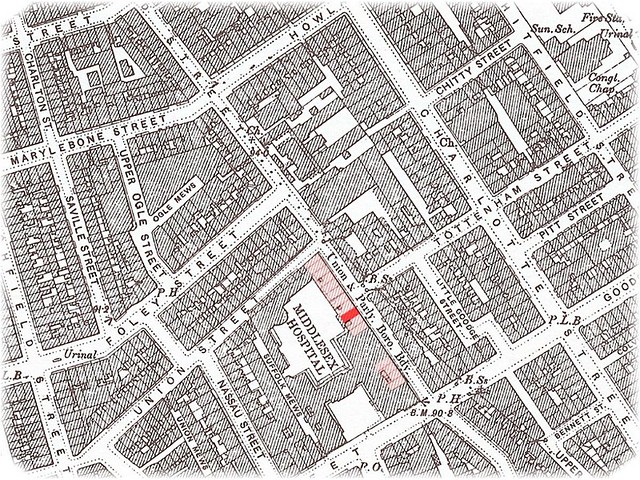
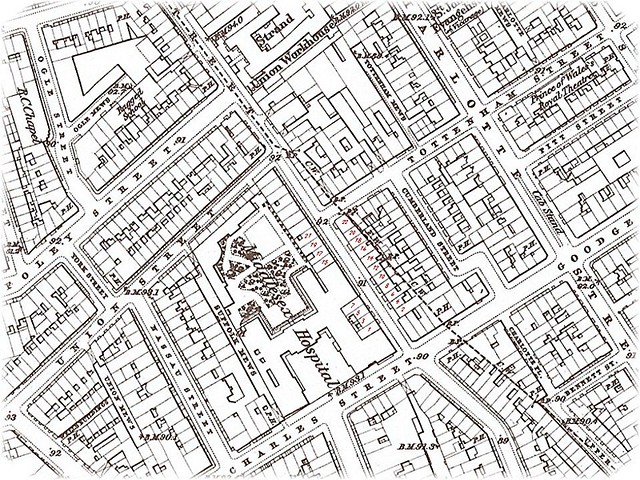
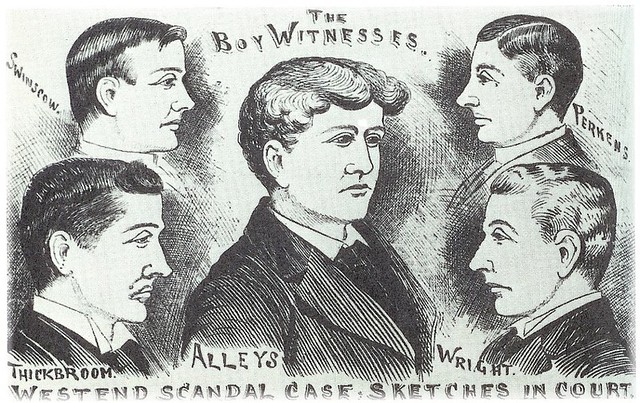
Comment